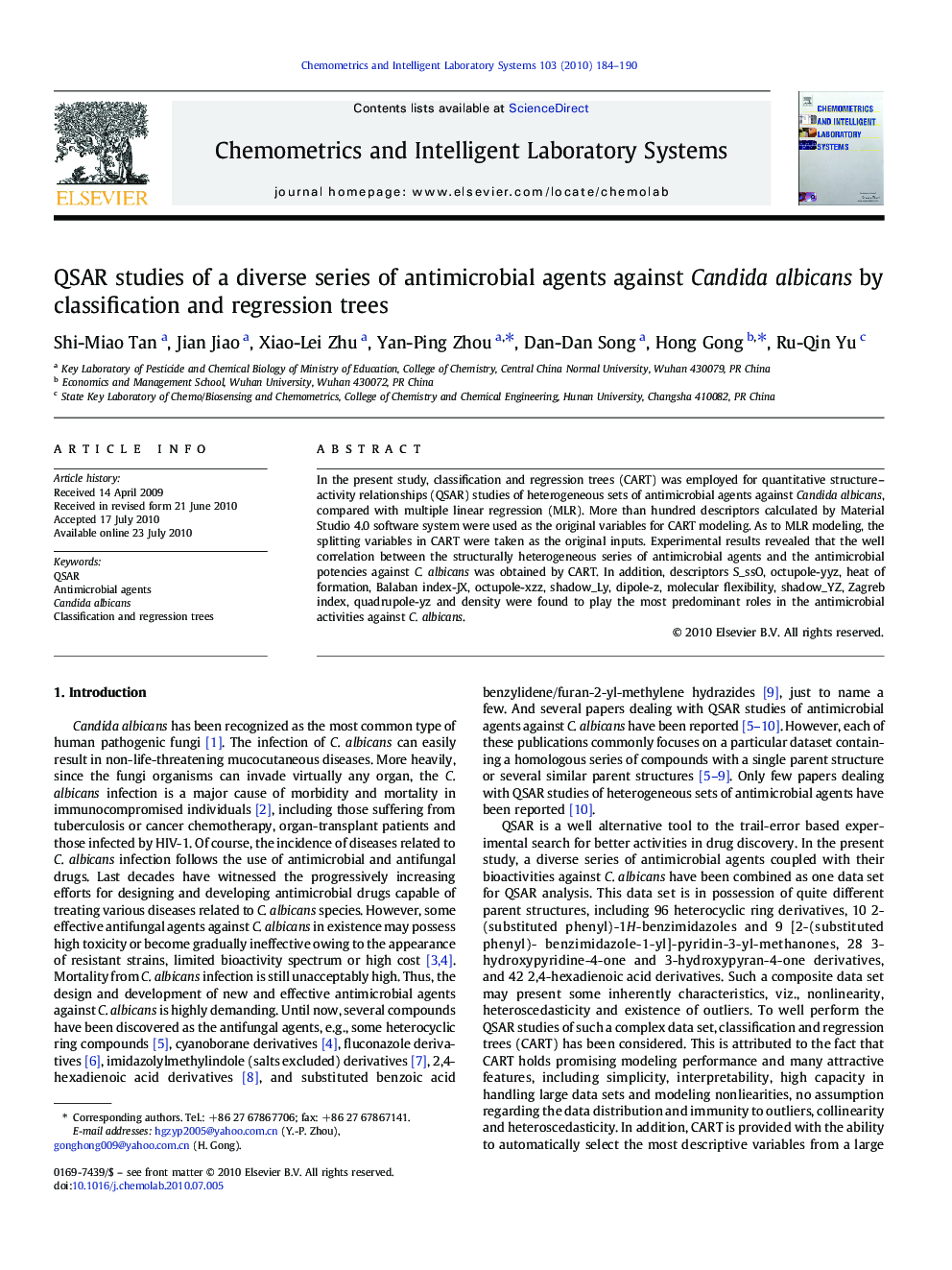| Article ID | Journal | Published Year | Pages | File Type |
|---|---|---|---|---|
| 1181400 | Chemometrics and Intelligent Laboratory Systems | 2010 | 7 Pages |
In the present study, classification and regression trees (CART) was employed for quantitative structure–activity relationships (QSAR) studies of heterogeneous sets of antimicrobial agents against Candida albicans, compared with multiple linear regression (MLR). More than hundred descriptors calculated by Material Studio 4.0 software system were used as the original variables for CART modeling. As to MLR modeling, the splitting variables in CART were taken as the original inputs. Experimental results revealed that the well correlation between the structurally heterogeneous series of antimicrobial agents and the antimicrobial potencies against C. albicans was obtained by CART. In addition, descriptors S_ssO, octupole-yyz, heat of formation, Balaban index-JX, octupole-xzz, shadow_Ly, dipole-z, molecular flexibility, shadow_YZ, Zagreb index, quadrupole-yz and density were found to play the most predominant roles in the antimicrobial activities against C. albicans.
